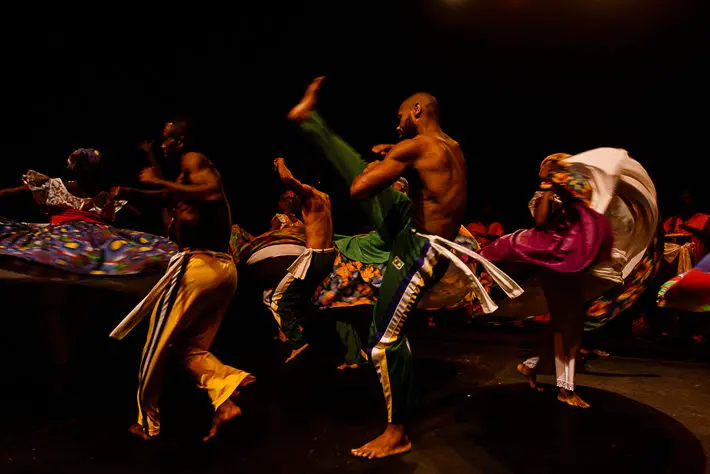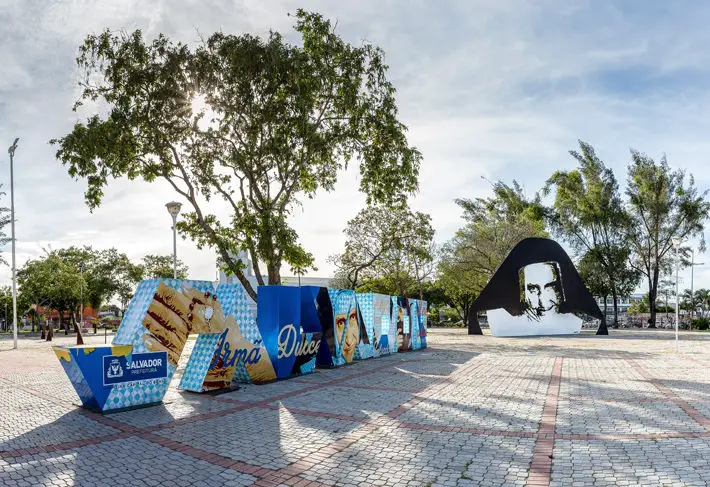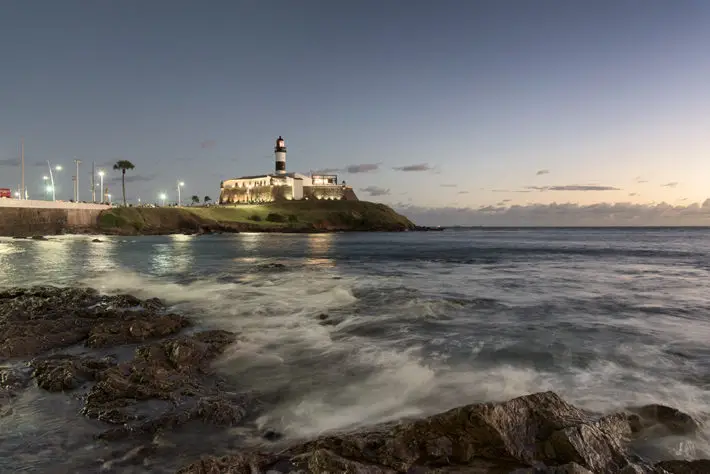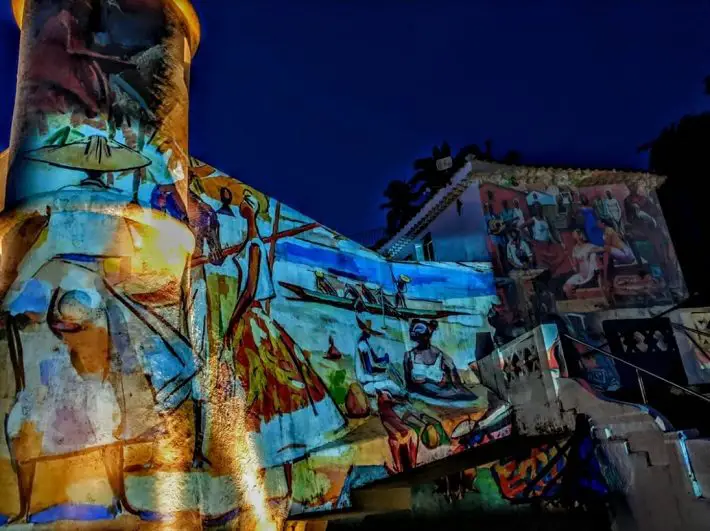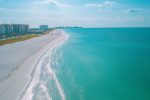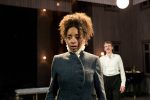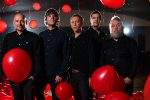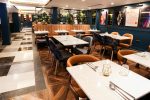Salvador, Brazil – Travel Review
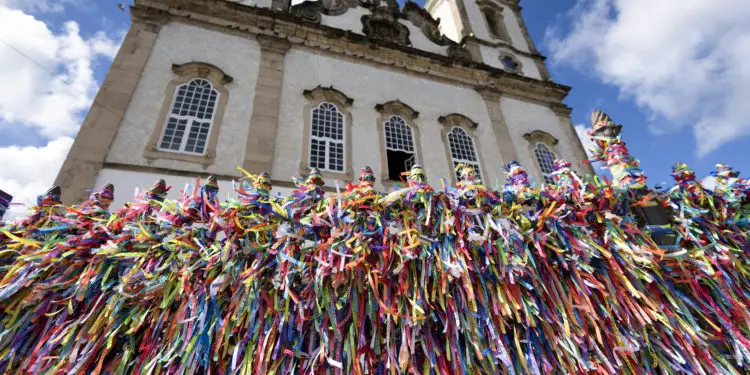
Brazil, land of carnival and samba, beaches and mountains, rainforest and waterfalls. This huge country takes up around half of South America and is home to nearly 210 million people. Helen Johnston explored three of its diverse locations. Here, Salvador…
Perhaps the most surprising thing we discovered in Salvador, the first capital city of Brazil, was that there is a British cemetery. The two-tier piece of land on the sea front provides a suitably scenic final resting place for a fair number of Brits adventurous enough to make the long journey to South America centuries before long haul flights were invented.
Many of the graves tell the cause of death alongside the regular details of name and age. From this we learn that civil engineer S. W. Reynolds Esq died from sun-stroke at the age of 35 in 1867. Several other people succumbed to yellow fever. A particularly ornate tombstone is dedicated to merchant Edward Pellew Wilson, who died in 1887 at the age of 84 after spending 68 years in Salvador.
Salvador is steeped in history and was Brazil’s capital for 200 years after the Portuguese settlers arrived. Every building seems to tell a story, from the forts where look-outs kept watch out to sea, to the churches celebrating candomblé, the Afro-Brazilian religion. The African influence is big in Salvador where 80 per cent of people have black ancestry. This is a result of the slave trade which saw several million Africans brought to the area to work mainly on sugar plantations.
“Beauty and intensity”
The luxurious lifestyle of the sugar cane aristocracy can be seen at the Carlos Costa Pinto Museum. Pinto gathered a dazzling collection of artefacts including jewellery, paintings, furniture and silverware now displayed in a former mansion house complete with grand staircase. One of the most interesting collections is the gold jewellery worn by freed slaves. The large bangles and heavy necklaces deliberately echoed the design of the irons and chains the slaves were wearing when they arrived in Brazil. The museum guide explained: “This was their way of saying ‘I came here chained but now look at me, wearing gold’.”
Slaves found a way of practising fight moves by disguising their movements as dancing to avoid the suspicion of their masters, which developed into capoeira, a cross between martial arts and dance. We watched a group of people learning these controlled moves at the Forte da Capoeira and later we were treated to a show featuring capoeira and other forms of dance, such as samba, at the Balé Folclório da Bahia (folklore ballet). This is the only professional folk dance company in Brazil and the hour-long show gave me goosebumps with its beauty and intensity, telling simple stories through incredibly athletic routines.
A walking tour of churches in Salvador brought us to the Rosário dos Pretos (Our Lady of the Rosary of the Black People) which was built by the brotherhood of black men, including slaves, in 1704. It has a distinctive pale blue façade behind which is an interior which follows the tradition of the Catholic churches built by the Portugese but is less ostentatious. Our tourist guide Manoel had worked here as a volunteer and said the church’s mission was never to turn away anyone in need.
“Fantastically ornate”
Grander churches can be seen in the Catedral Basilica, with its flight of steps leading to the main door, the Igreja do Paço with its tower affording views out to sea, and especially the Igreja do Sāo Francisco (St Francis). The latter is also known as the golden church because of its fantastically ornate interior which took 57 years to complete. Every inch appears to be either made of gold or covered in gold. It’s almost too rich in its intricacies and must surely be a distraction from prayer.
My favourite church was Igreja do Bonfim (pictured, top), mainly because of its location at the top of a hill in the Itapagipe peninsula. This striking 18th century church is a place of devotion as seen by the thousands of fluttering multicoloured ribbons attached to the railings around it. The ribbons represent the prayers of the people who bought them, all hoping for divine intervention to remedy some problem in their lives. Inside the church is the hall of miracles where letters, photos and wax mouldings of parts of the body bear witness to the prayers people believe have been answered.
This religious faith was embodied by the nun Irma Dulce who has been recognised as a saint by the Catholic church and will be canonised in October. Brazil’s answer to Mother Teresa spent a lifetime helping the poor and needy of Salvador and a hospital founded by her continues to treat patients for free. Some of her personal effects can be seen at the Sister Dulce Memorial, including a slope-backed wooden chair she slept in for 30 years to fulfil a promise to God. Her lungs were impaired and she suffered ill health but lived to be 77. A chapel dedicated to St Anthony, to whom she used to pray, is part of the building and is used regularly for services, making this is a living memorial. There is definitely a sense of ‘goodness’ about the place.
“Calming influence”
Salvador was also home to Brazil’s bestselling author Jorge Amado and his wife Zélia Gattai, also a writer. Their house Casa do rio Vermelho was a magnet for the literary and artistic crowd occupying this bohemian neighbourhood. Armado’s novels were translated into many languages and he counted Picasso among his friends. There are pictures drawn by Picasso at the house which is open to the public. It still has Amado’s typewriter and writing paraphernalia at the table where he worked, and the kitchen has a video of his cook, now a celebrity in her own right, preparing meals with all manner of colourful ingredients.
The house is full of charm but it’s the beautiful garden that really makes this a peaceful oasis. Among its leafy greenery you would hardly think you were in the middle of a city. Amado loved the garden and there are mosaic-tiled seats where he and Zélia used to sit and enjoy its calming influence.
Another beautiful home has been turned into an Ice Cream Museum on the shore of the Tainheiros Cove. The mansion was built in 1904 and has cast iron railings imported from the UK and marble floors. It was the family home of a prosperous food merchant and has been restored to its former glory by the owners of the Sorvetes Real ice cream company. Visitors can choose from a huge array of flavours of ice cream in the café behind the house.
“Glorious colours”
We weren’t in Salvador at the right time to witness the carnival season, usually February or March, but we experienced the next best thing at the Carnival House where there is a room with a fancy dress box and a huge screen showing videos of dancers teaching you how to move to the samba-reggae beat. Staff have the happy job of joining visitors in dancing. Other rooms have exhibits detailing the history of the carnival, including how black people were once banned from taking part. The carnival is a massive street party which usually sees 2.5m people take to the streets, and which has been graced by the likes of Bono and Fatboy Slim. Brazilian music is wide-ranging and there is a treasure trove of it to be discovered at the unassuming Cana Brava Records shop in Pelourinho where knowledgeable staff will introduce you to a variety of singers.
Of course, any visit to Salvador wouldn’t be complete without taking advantage of one of its lovely white sand beaches. The Atlantic here is an inviting gorgeous blue-green colour and even at night it’s warm enough to swim at the sheltered Porto da Barra which has been named one of the 50 best beaches in the world. Before you do that, you can watch the sun set in glorious colours from one of the colonial forts along the coast, such as Forte Santa Maria or Forte Sāo Diogo, or learn a bit more history about the seafaring Portugese explorers at the Nautical Museum.
“Sense of purpose”
Souvenir shopping can be done at the huge Mercado Modelo built in 1861 in the lower commercial district and boasting 263 stalls on two floors selling a whole raft of goods from key rings to table cloths. It’s also a great place to eat. The Camafeu de Oxossi restaurant has staff in colourful African dress serving a delicious range of foods in a large seating area and balcony with a great view over All Saints Bay. If you want to know more about Bahian cuisine you could pop along to the Gastronomy Museum in Pelourinho afterwards or if you fancy trying the spirit cachaça made from fermented sugarcane juice, head to Cuco Bistrô which offers tasting sessions.
I knew nothing about Salvador before visiting but I left impressed with the place and the people. There is a sense of purpose about the city as it continues with a programme of restoration and building new facilities. “There’s a lot to do but we are getting it done,” said Manoel. “We have a city with its own identity and so much to offer: culture, history and great beaches. This was the first capital of Brazil and that makes it special.”
As part of Helen’s Brazilian itinerary she also visited Rio de Janeiro and Foz do Iguaçu
If you want to eat on a beach front while watching the waves try Barravento Restaurant or Loro Beach Club
For art and culture with your meal try Casa de Tereza
If you fancy dressing up for a posh dinner try Adamastor Restaurant at the Fera Palace Hotel
For an open-air meal in the square outside St Francis Church try Odoyá Restaurant
With thanks to Manoel Neto at Salvador tourism office for hosting Helen’s trip. For more information about places to visit go to www.salvadordabahia.com.
Top image: Uiler Costa
